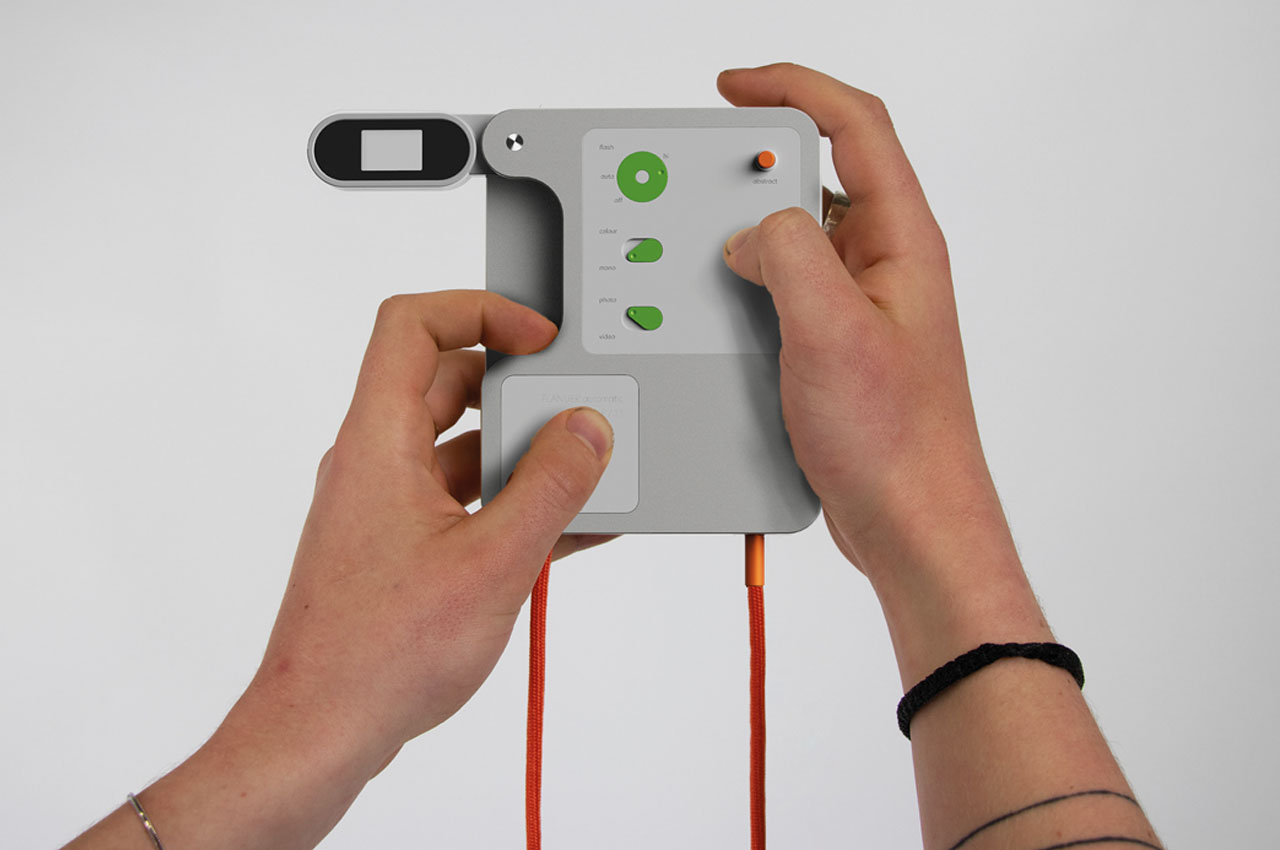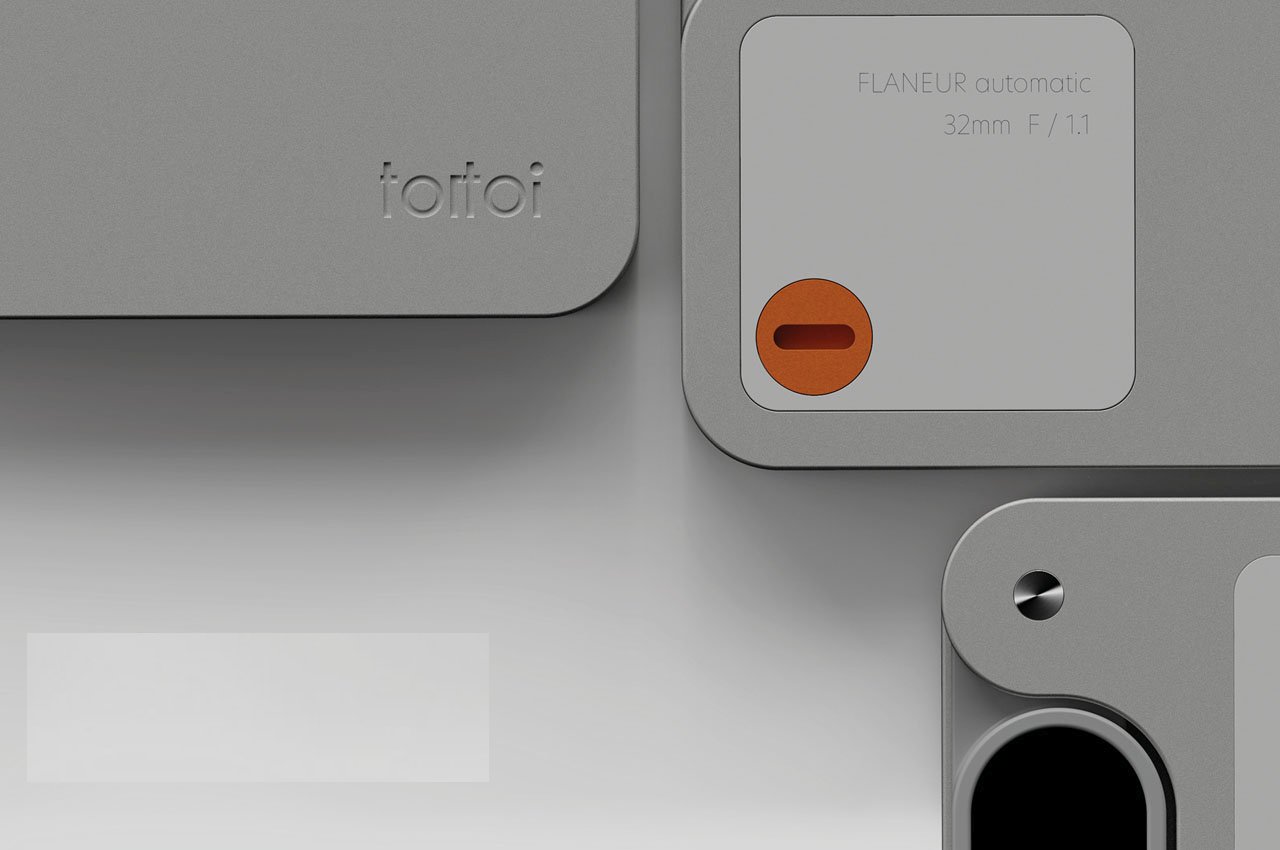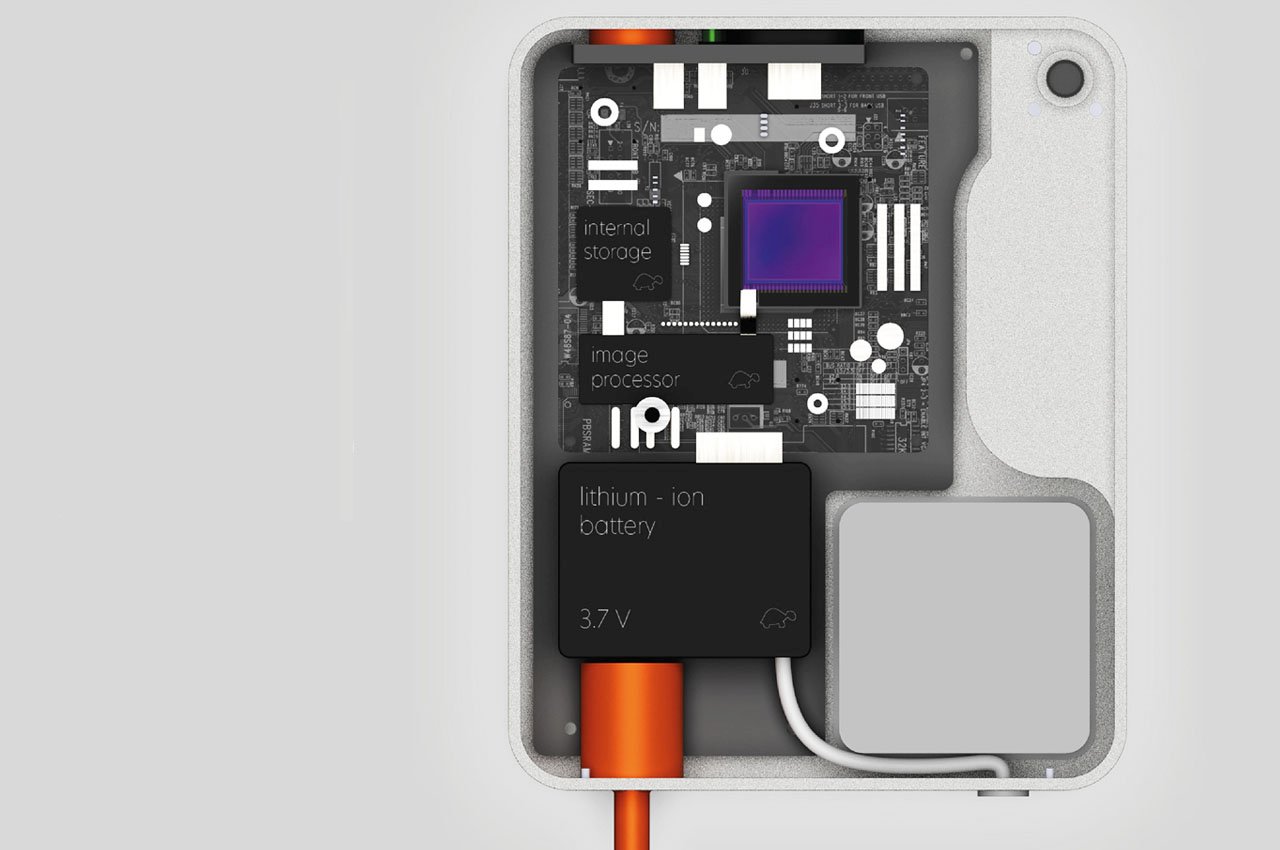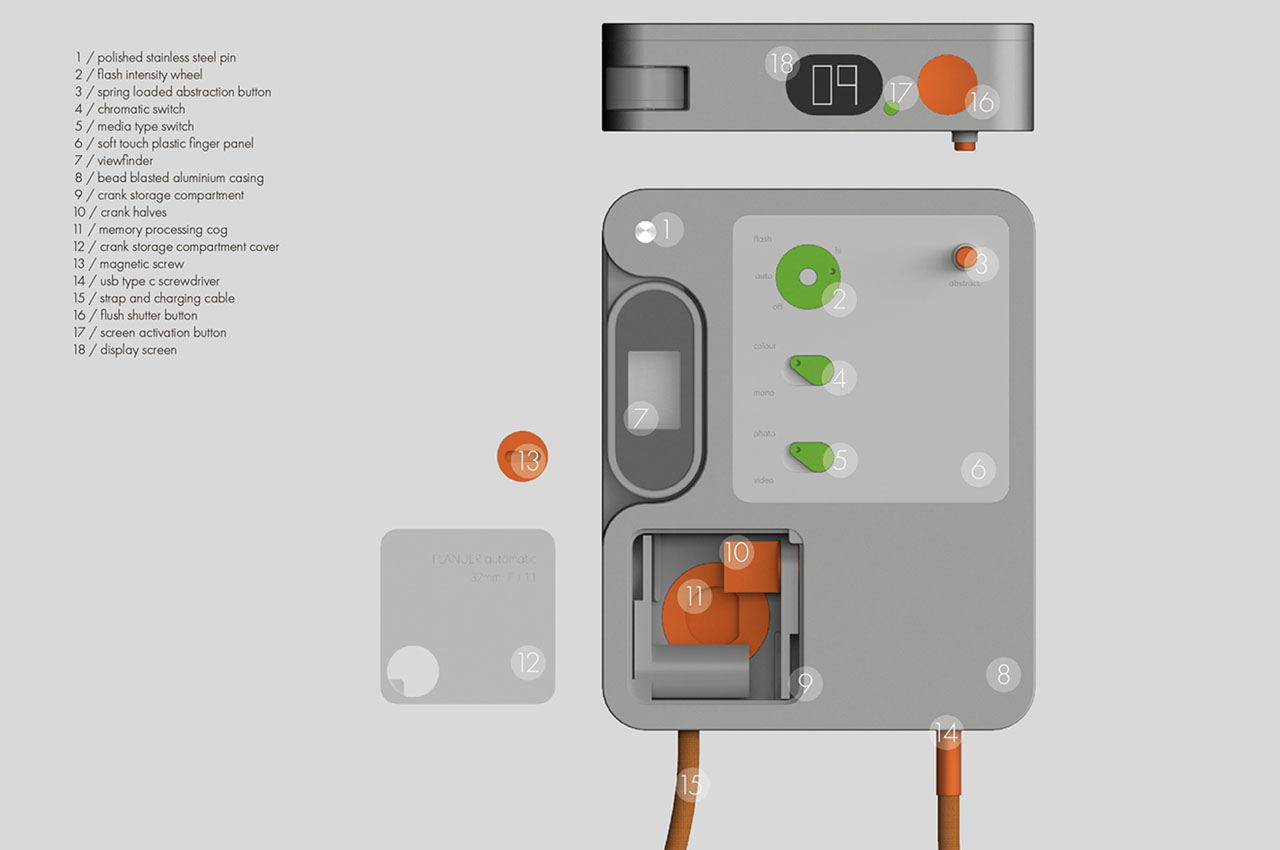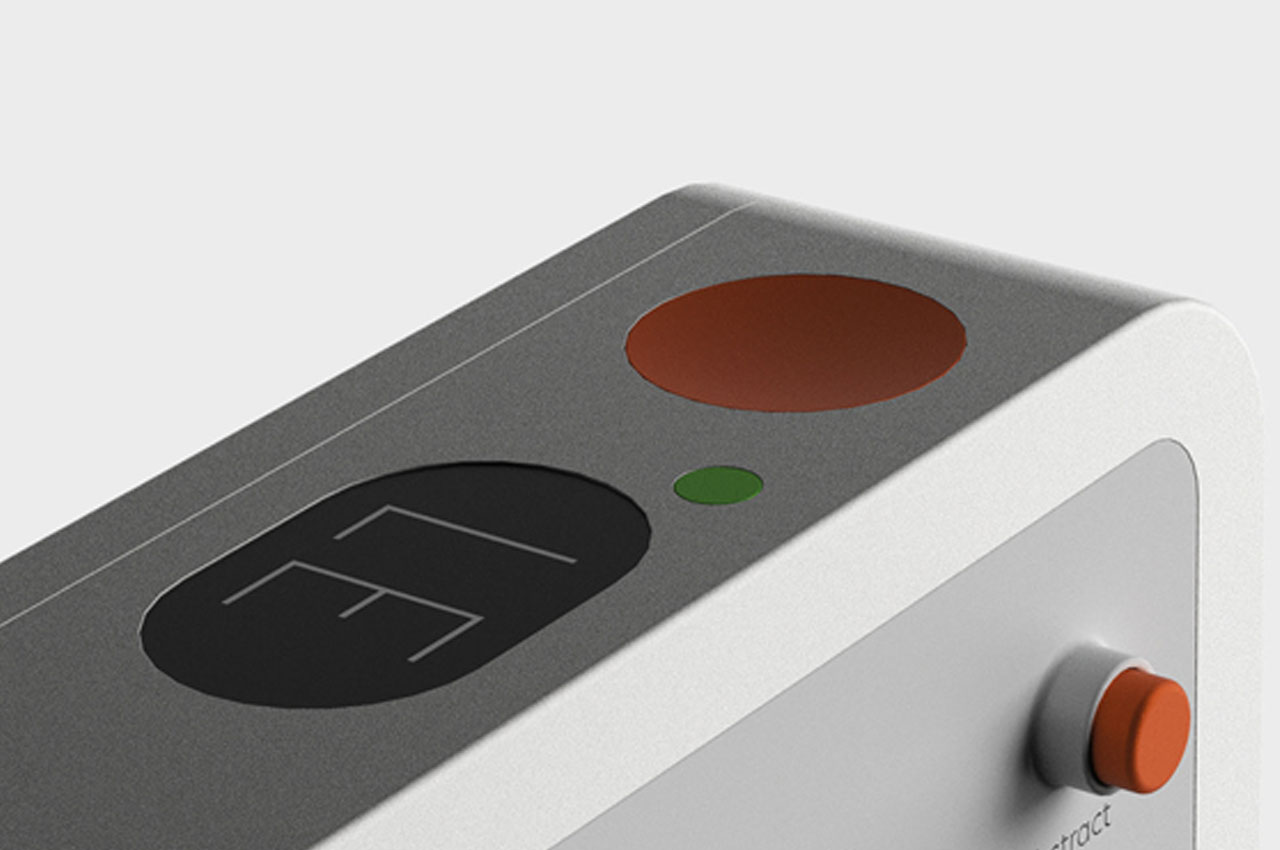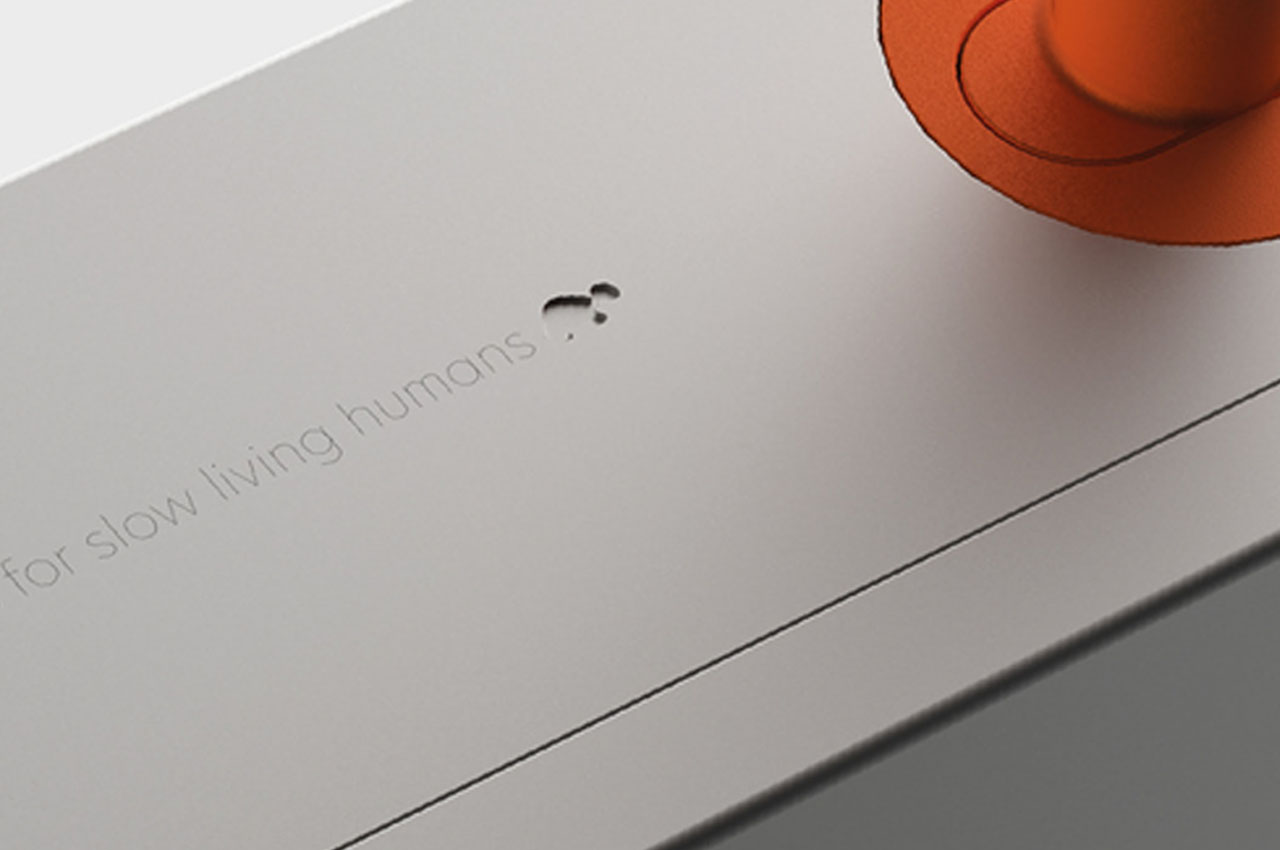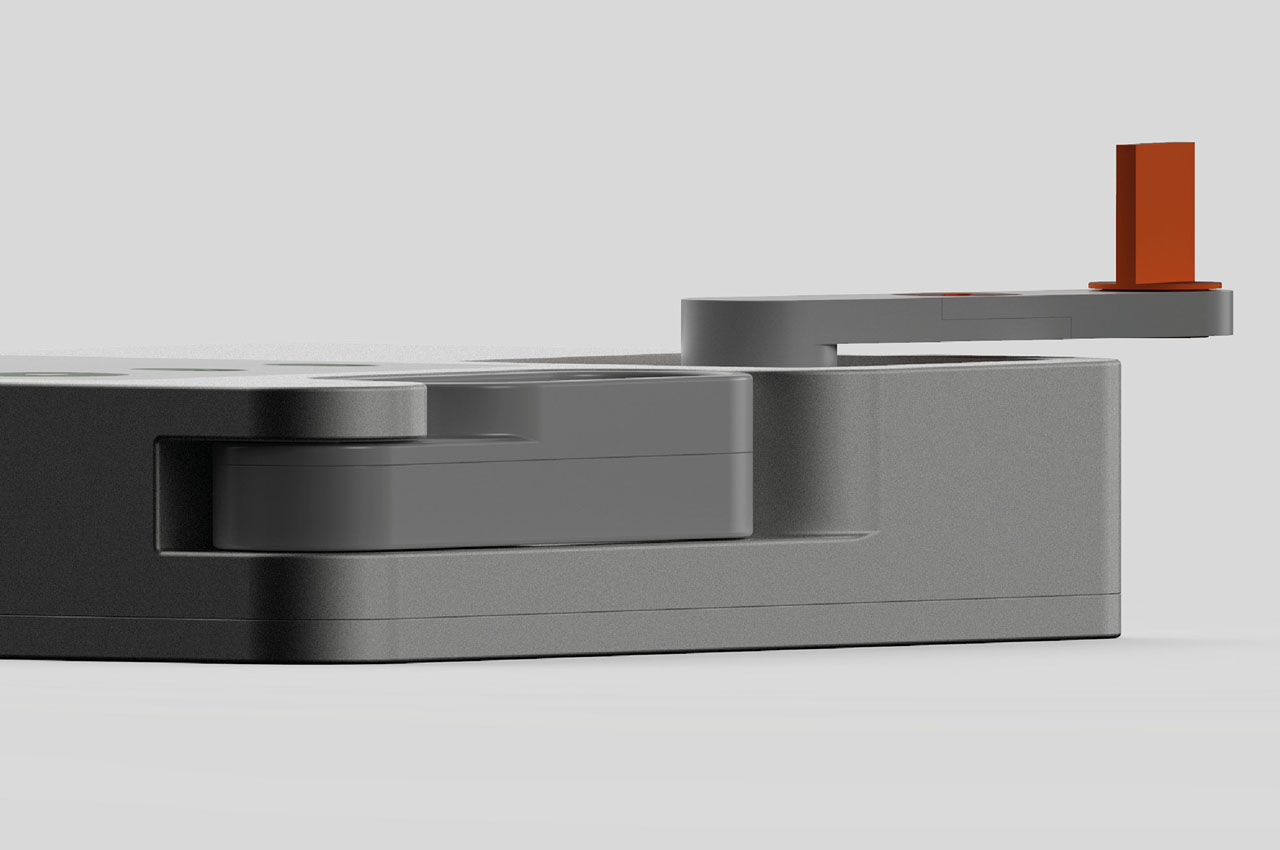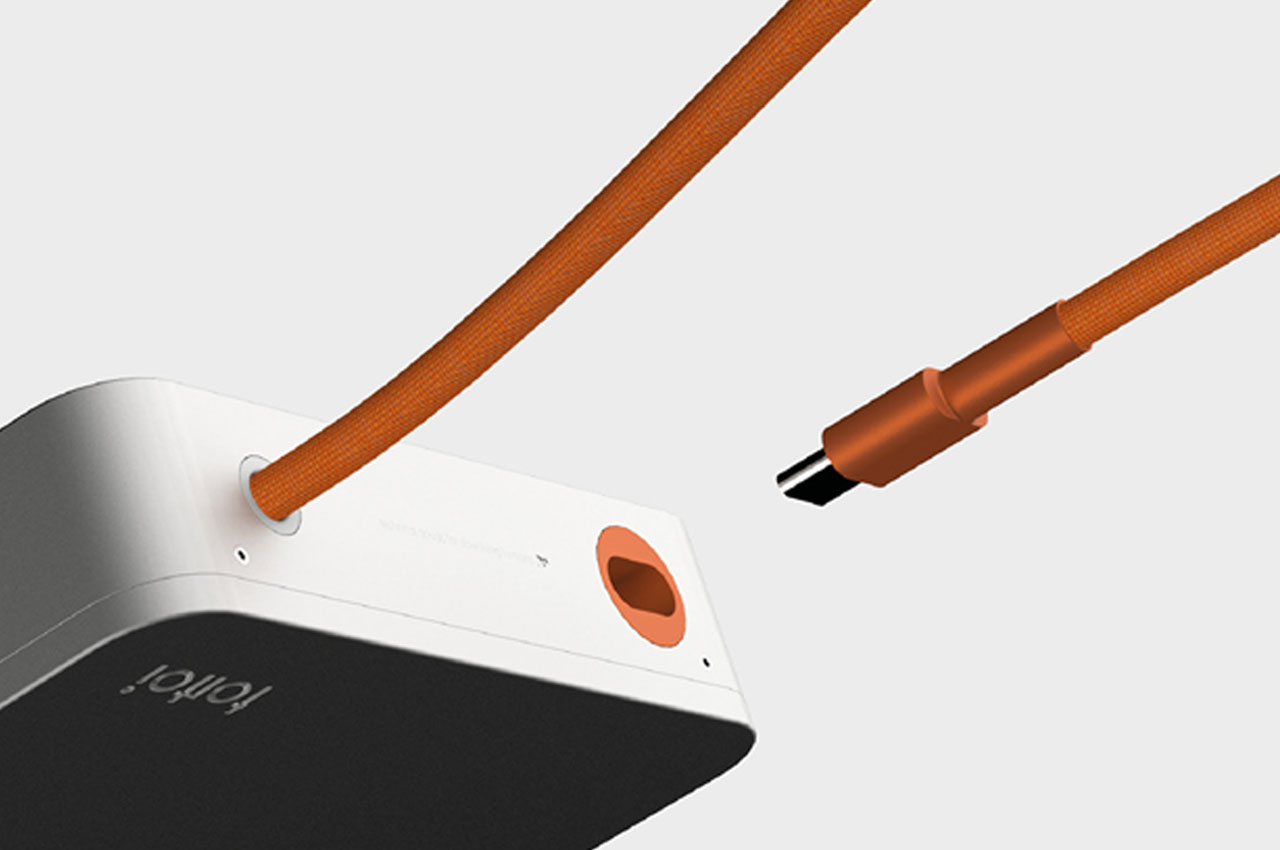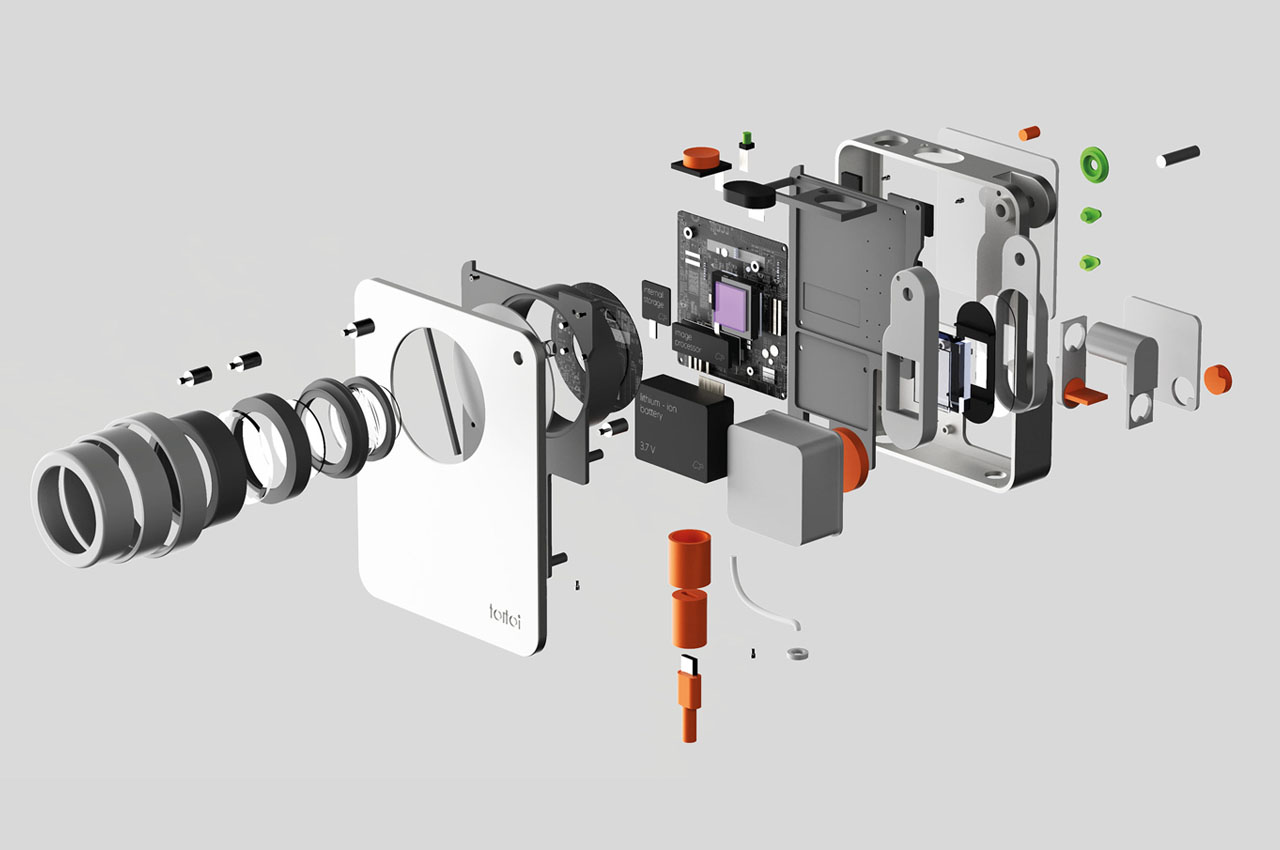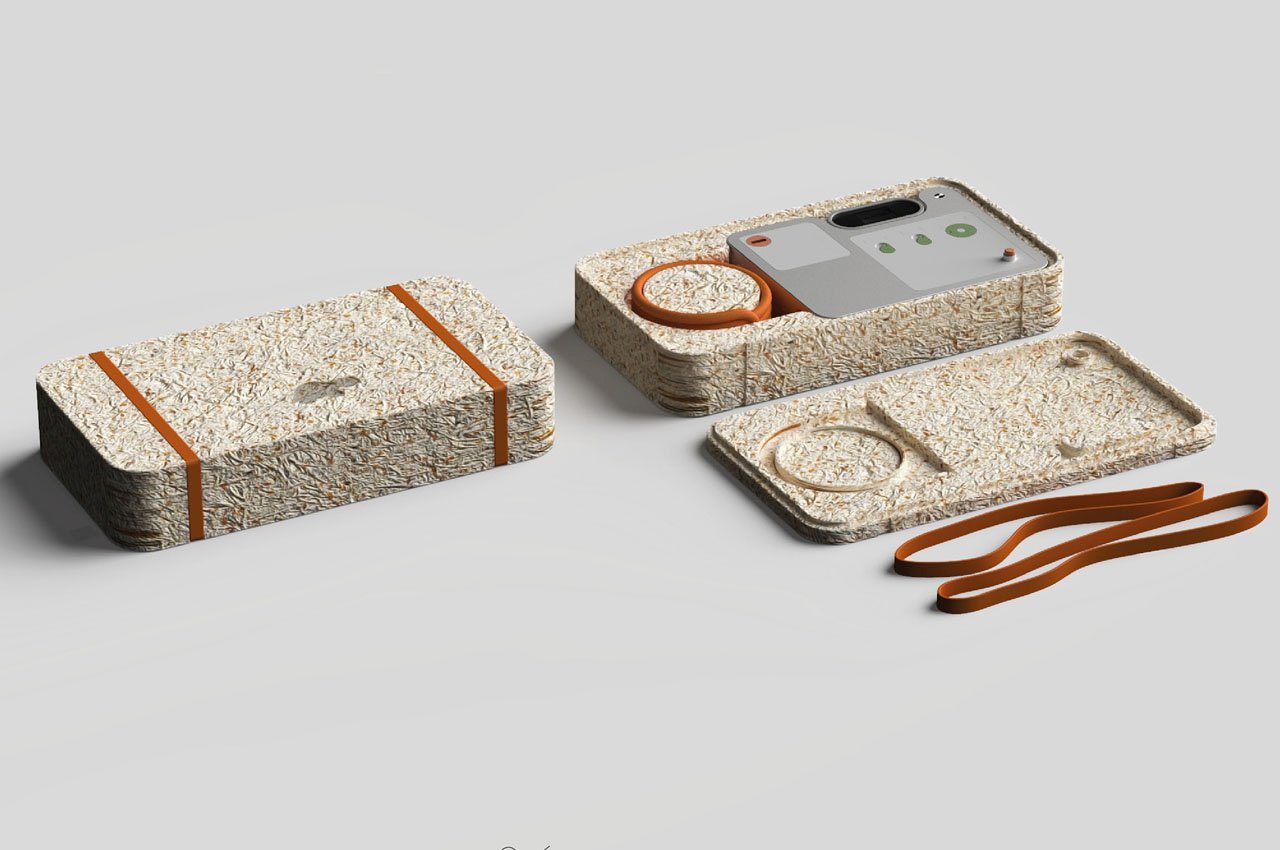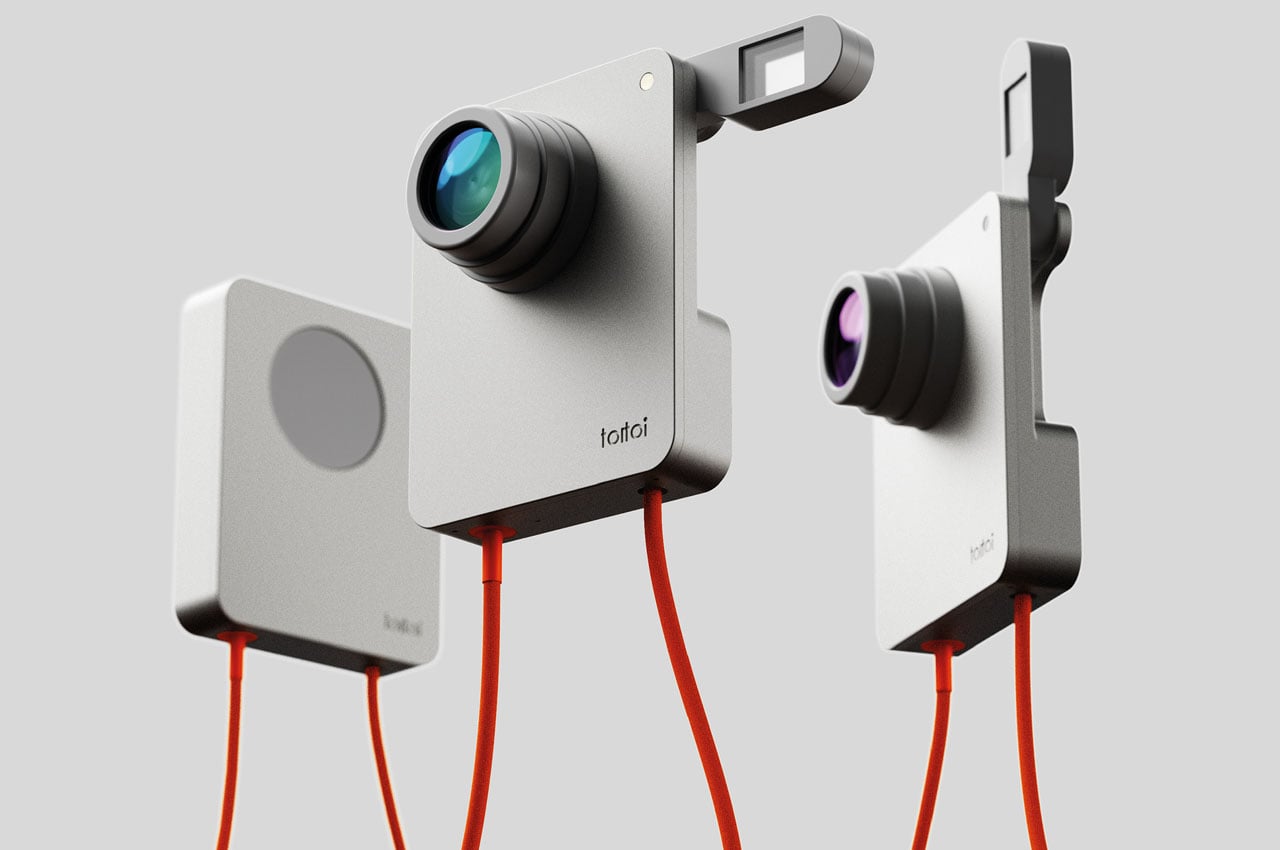
Henry Smallbone’s FLANEUR digital camera bends the general notion of how a smart camera needs to look like and how’s one going to use it. The unique design and functionality are the USP of his creation, and I like the idea completely!
Taking things slow is associated with being wise – just like a tortoise. The FLANEUR digital camera is the result of this very philosophy to slow down and being considerate in the digital world. Just like the tortoise, the camera motivates the user to not just go berserk with clicking photographs (simply because it could be done) but take a slower approach to every aspect of everyday life. The camera stores 37 photos in its memory for that very intent – making the user mindful of limited clicks he/she has at her disposal.
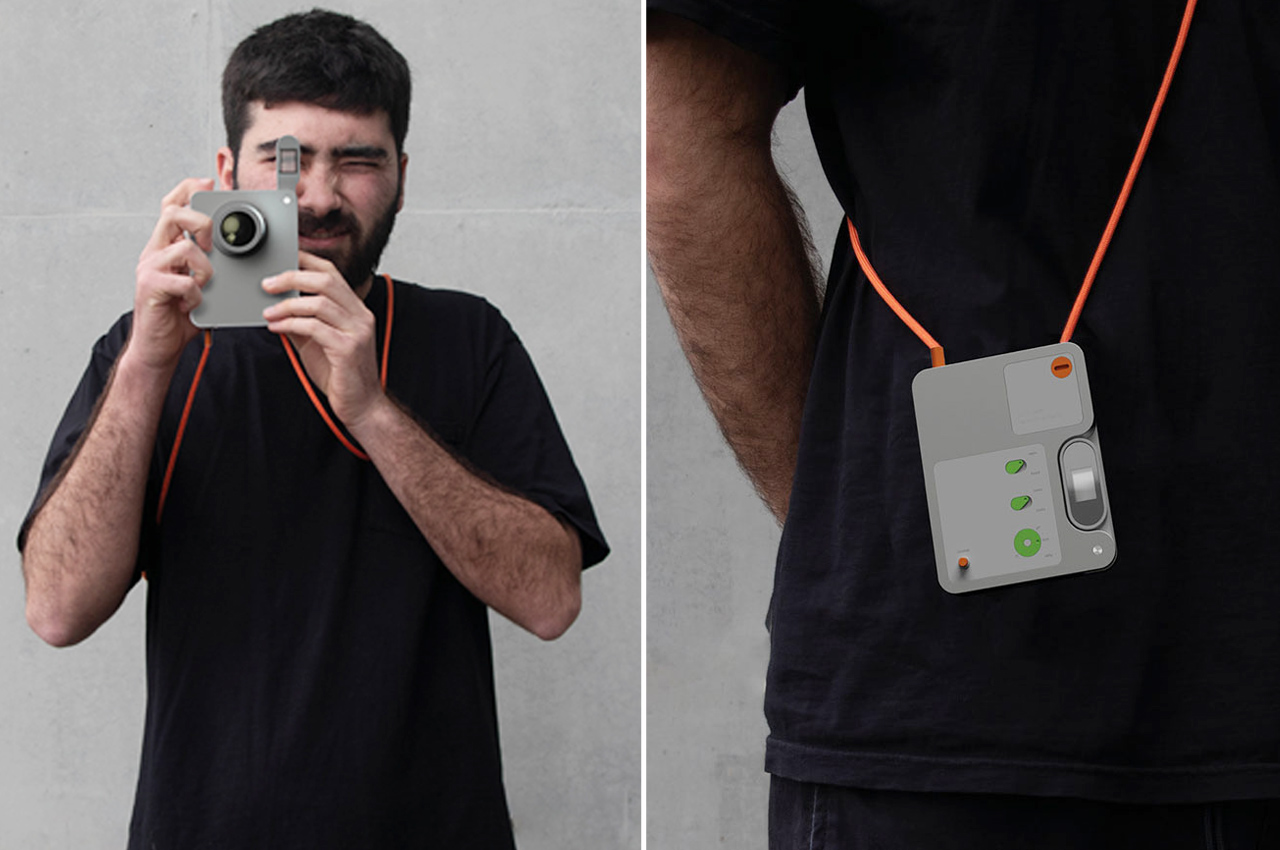
In fact, “Flaneur” in French means a person who’s a stroller. This term was used in the 19th century by French poet Charles Baudelaire to denote an observer of modern urban life. Now, it has taken up the meaning for someone who meanders around observing things keenly. The camera’s design is inspired by this notion – hence, the very colorful, casual form factor that one can carry around. Henry gives the accessory a bold aluminum casing design with large buttons and dials, inviting curiosity by onlookers.
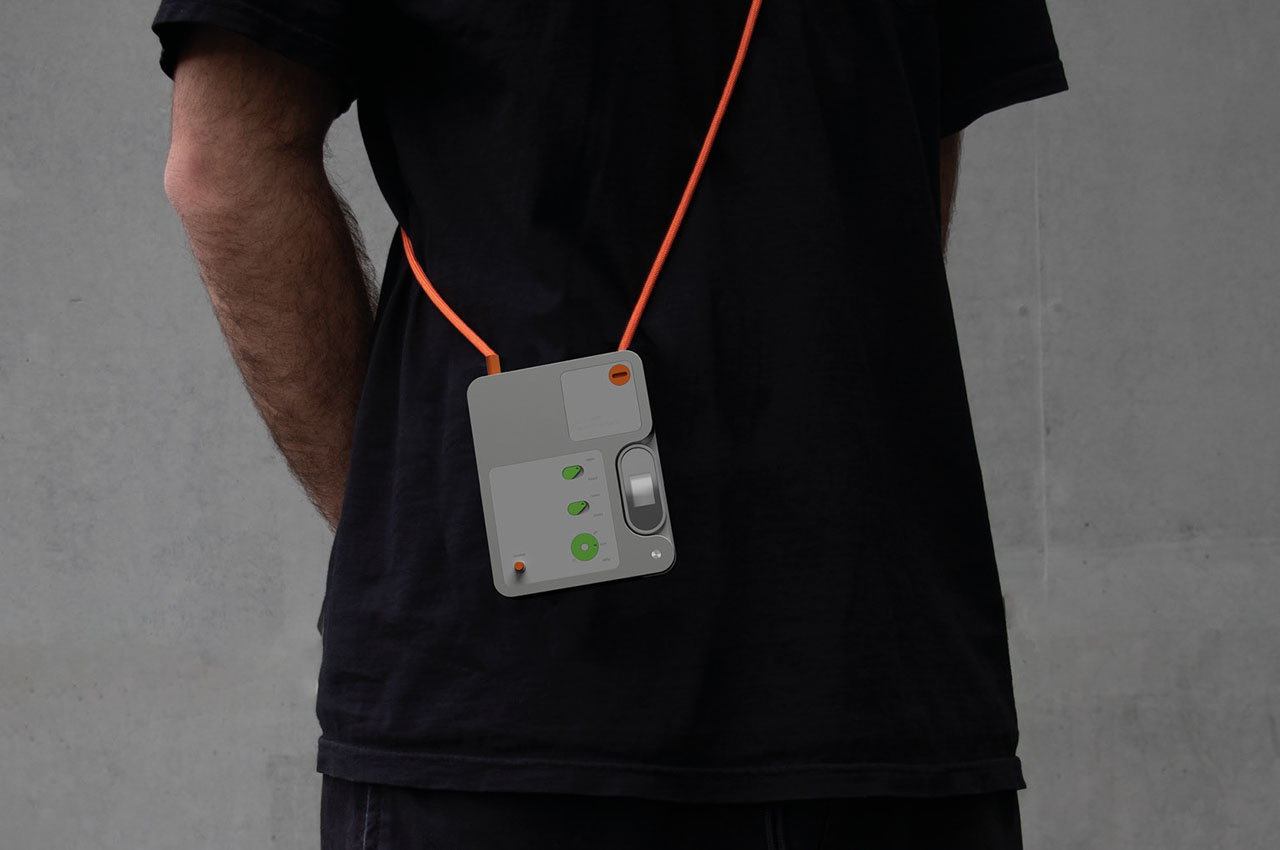
The smart camera has a powerful performance quotient – courtesy of the crossed section of closed lens that hide from plain sight in a series of plastic casings that move independently. Depending on the shot being taken, the lenses can be swapped with the push of a button. A telephoto for taking a portrait shot or a wide lens for shooting panoramic landscapes on a golden sun bathed evening.
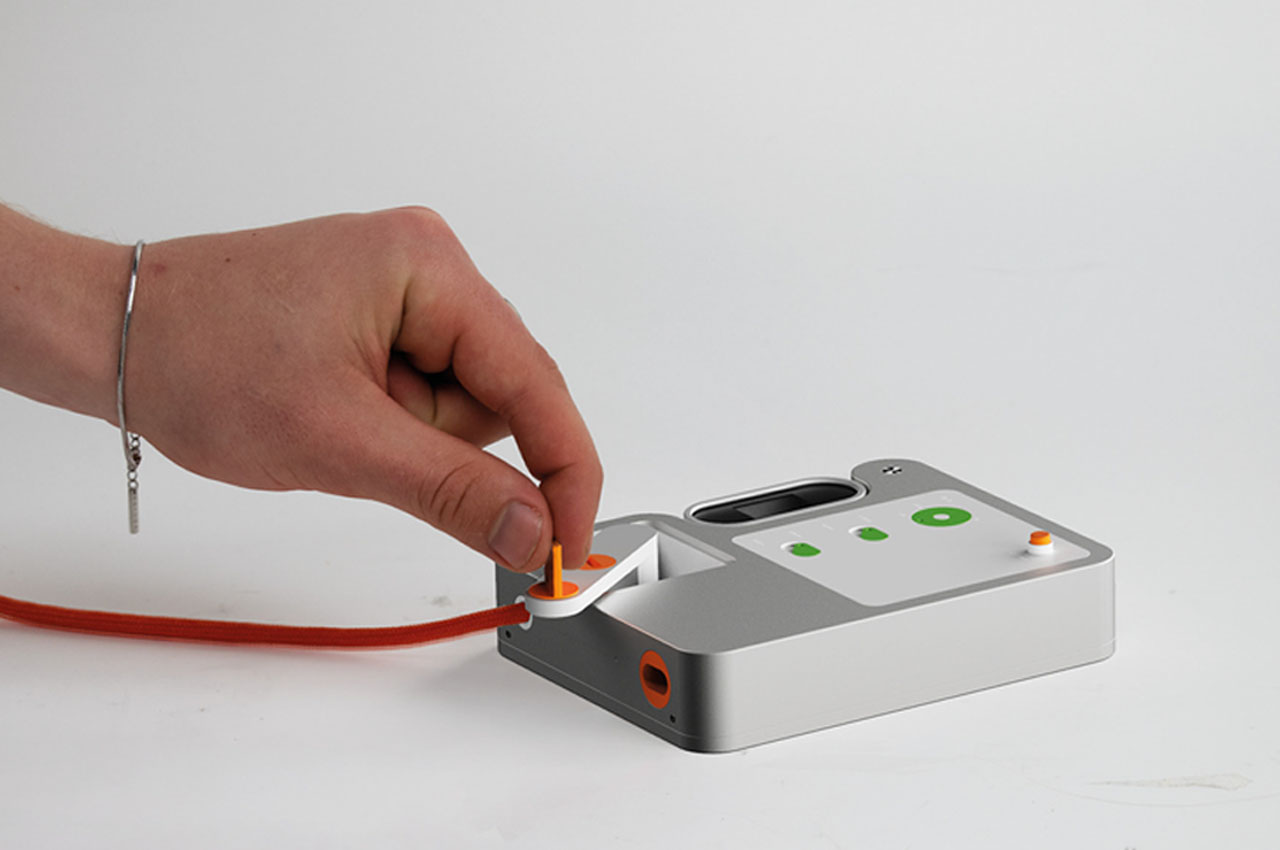
The viewfinder can rotate in 180 degrees direction for portrait shots or 90 degrees for a wide shot without moving the camera instead. The functionality is also kept to the bare minimum to let you focus on capturing memories. The flash intensity is controlled via the large wheel, while the positional switches lend the option to toggle between colored or monochrome photos or videos.
Designer: Henry Smallbone
